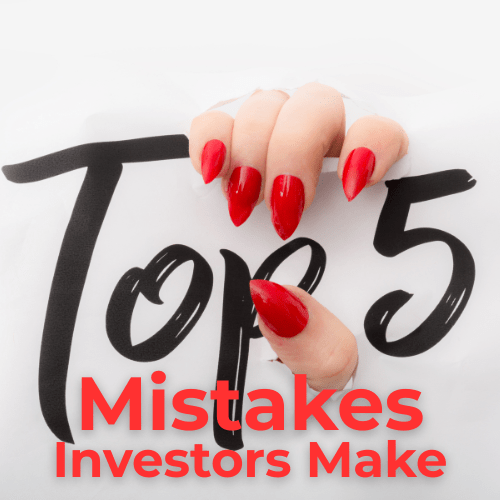
Top 5 Mistakes Investors Make When Buying a Business for Sale in Australia
Share
Buying a business is often seen as a shortcut to entrepreneurship or investment income. But here’s the truth: many investors in Australia get burned. Why? Because they underestimate the complexity of evaluating a small business and overestimate what the numbers alone can tell them. In this post, we’re going to explore the five biggest mistakes I see time and time again — and how to avoid them so you don’t buy yourself a nightmare instead of a cash-generating asset.
Whether you're a seasoned investor or a first-time buyer looking for freedom and cashflow, these are the traps that can cost you millions — or at the very least, your peace of mind.
🎙️ New Episode: Due Diligence Deep Dive
Before you buy, make sure you're not buying blind. This episode of Built to Sell | Built to Buy exposes the hidden risks, seller tricks, and the truth behind due diligence that most investors miss.
Or browse all episodes at sampenny.com/podcast
Mistake #1: Believing the Asking Price Reflects True Value
This is the most common mistake I see. Many buyers assume that if a business is listed for $800,000, that figure must be justified. In reality, the asking price is often inflated — based on what the seller “feels” it’s worth, not a structured valuation.
In Australia, small businesses often list at unrealistic multiples, especially when the seller hasn't prepared the business for sale. The asking price may reflect personal attachment, unverified future potential, or a retirement figure the seller "needs" — none of which should matter to you.
What to do instead:
- Get your own valuation based on adjusted EBITDA, not just net profit.
- Compare to recent sales in the same sector, region, and size bracket.
- Consider the risk profile: reliance on owner, industry stability, customer concentration, etc.
Pro move: Always negotiate from the financials up, not the asking price down.
Mistake #2: Ignoring Owner Dependence
You’re buying a business, not the owner’s brain. And yet, so many buyers fail to see that the business success is often tightly tied to the existing owner’s involvement, relationships, and personality. Once that person exits, the business can collapse if the systems, people, and processes aren’t strong enough to stand alone.
Warning signs of high owner dependence:
- No second-in-command
- Owner is the main salesperson or client contact
- Key IP is in their head, not documented
- Staff rely on the owner for all decisions
What to do instead: Assess how “plug and play” the business is. Ask to see the organisational chart, training manuals, and staff independence. If it’s owner-reliant, that’s not necessarily a deal-breaker — but the price should reflect the risk and the work you’ll need to do post-acquisition.
Mistake #3: Skipping Proper Due Diligence
Due diligence isn’t just about verifying the numbers. It’s about interpreting the story the numbers tell — and spotting the gaps, red flags, or manipulation attempts. I’ve seen buyers skip a deep dive because they “felt good about the seller” or because “everything looked fine on paper.” Huge mistake.
What to check in Australian due diligence:
- 3 years of P&L, balance sheet, and cashflow
- ATO compliance (BAS, super, GST registration)
- Payroll and employee entitlements (long service, annual leave)
- Key contracts (customers, suppliers, leases)
- Trust structures, loans, and director guarantees
Pro tip: Don’t rely on summaries. Get the source documents. If something’s not in writing, it doesn’t exist.
Want to download the same Due Diligence Checklist I use with my private clients? Click here.
Mistake #4: Underestimating Working Capital Needs
Many buyers think the business will fund itself from day one. But here’s what happens: you buy the business, and suddenly you need to pay wages, fund stock, service customers — before any cash hits your account. Working capital shortages are a top reason acquisitions go south early.
What to clarify before the deal:
- How much working capital is included in the sale?
- Do you need to inject additional funds to keep it running?
- What’s the cash conversion cycle (how fast you turn work into cash)?
In Australia, where many businesses have seasonal revenue or long invoice cycles (e.g. in B2B services or wholesale), working capital can make or break the first 90 days post-settlement.
Mistake #5: Buying Without a Clear Exit Strategy
This is the mistake that doesn’t hurt upfront — but bites down the road. Every investor should begin with the end in mind. What will make this business more valuable in 3–5 years? Who is the likely next buyer? How can you de-risk and scale in a way that increases the multiple?
Without an exit strategy, you risk:
- Spending years in a business you can’t sell
- Getting stuck in the owner/operator trap
- Overcapitalising without a valuation return
Smart buyers: Know what buyers will look for before they buy. They de-risk from day one, build IP, document systems, and work themselves out of the day-to-day so they’re not stuck in the same trap the previous seller was in.
Bonus Mistake: Falling in Love with the Business
This isn’t technically in the top five — but it’s the most emotionally dangerous. I’ve seen buyers become so enamoured with a brand, idea, or founder that they ignore glaring risks. They become emotionally invested and start justifying things they’d normally flag. This is how good people buy bad businesses.
What to do: Stay objective. Treat this like a deal, not a passion project. Get external advisors to gut check your thinking. Listen to dissenting views. And remember — there’s always another deal.
Final Thoughts: Don’t Just Buy a Business, Buy It Right
The Australian business-for-sale market is full of opportunities. But success doesn’t come from saying yes — it comes from knowing when to say no. Great investors are relentless with due diligence, ruthless with risk assessment, and grounded in commercial logic — not emotion.
If you’re thinking about buying a business, I can help. I offer a 30-minute strategy session where we’ll gut check your deal, walk through your buying criteria, and map out your best path forward. Book here.
And don’t forget — download my full due diligence checklist, used by hundreds of business buyers across Australia. Grab it here.
Listen to the Built to Buy Podcast
If you found this useful, check out the Built to Sell | Built to Buy Podcast — where I break down real-world acquisitions and interview smart buyers, advisors, and operators. New episodes weekly.
Related Reads
- 5 Common Mistakes Australian Owners Make When Selling Their Business
- Business Brokers in Australia: How to Find the Right One for Your Business for Sale Deal
- How to Buy a Business for Sale in Australia: The Ultimate Investor's Guide
- Business for Sale Gold Coast QLD: Why Investors Are Flocking to This Region
- Is Seek the Best Place to Find a Business for Sale? What Investors Need to Know


